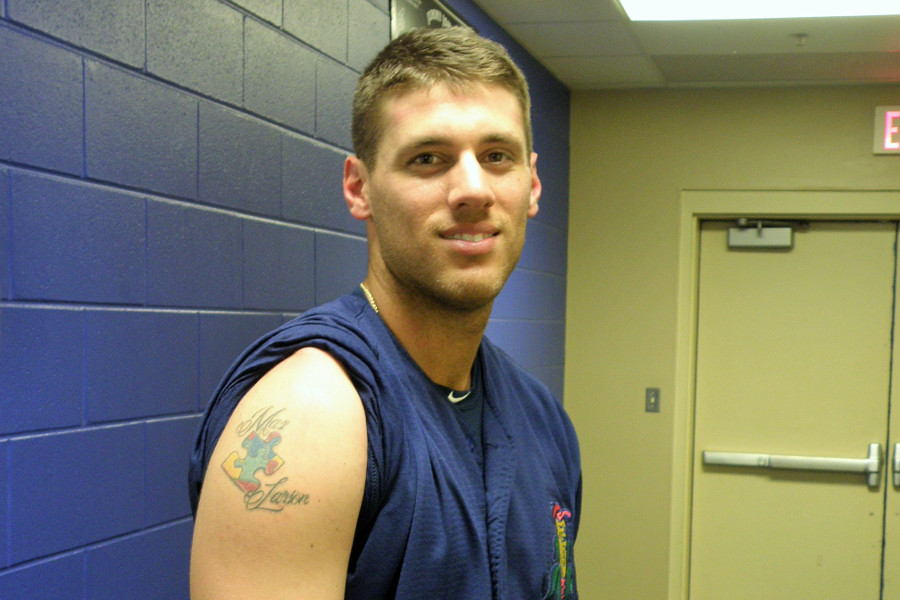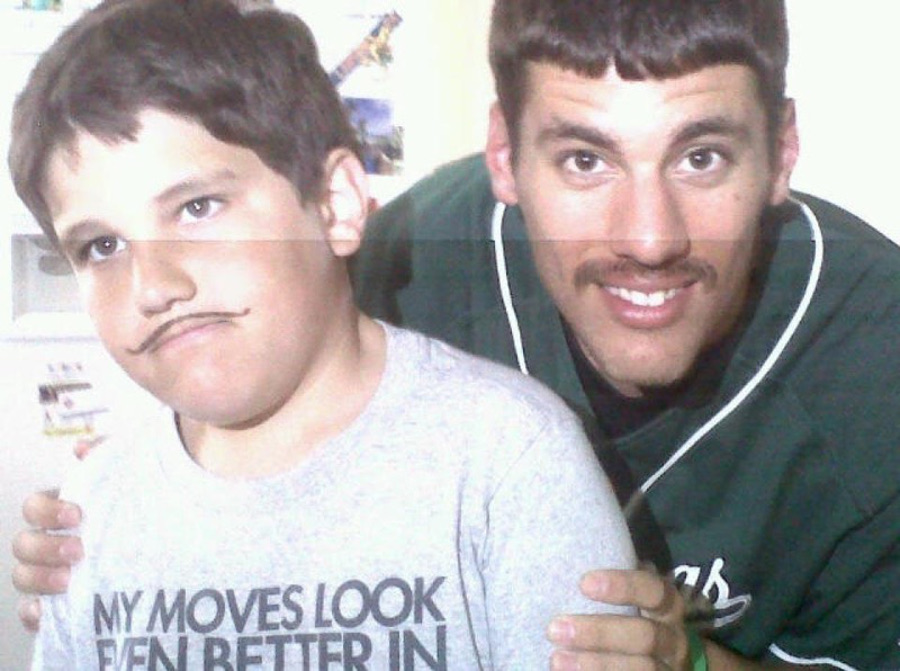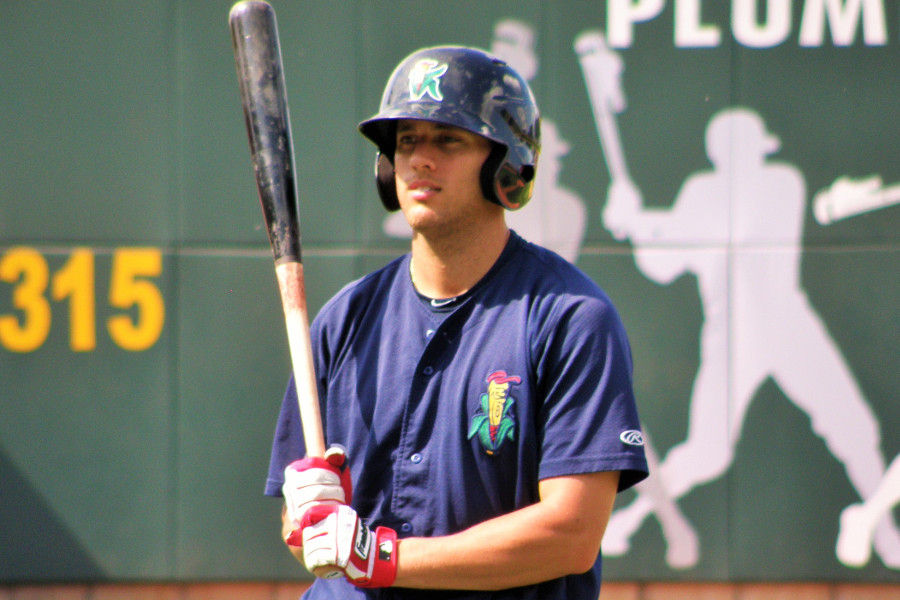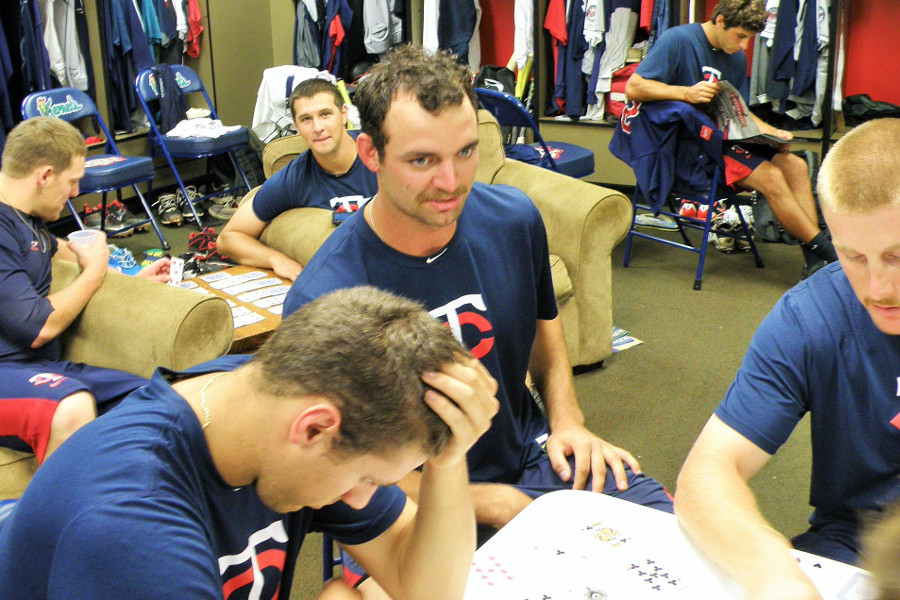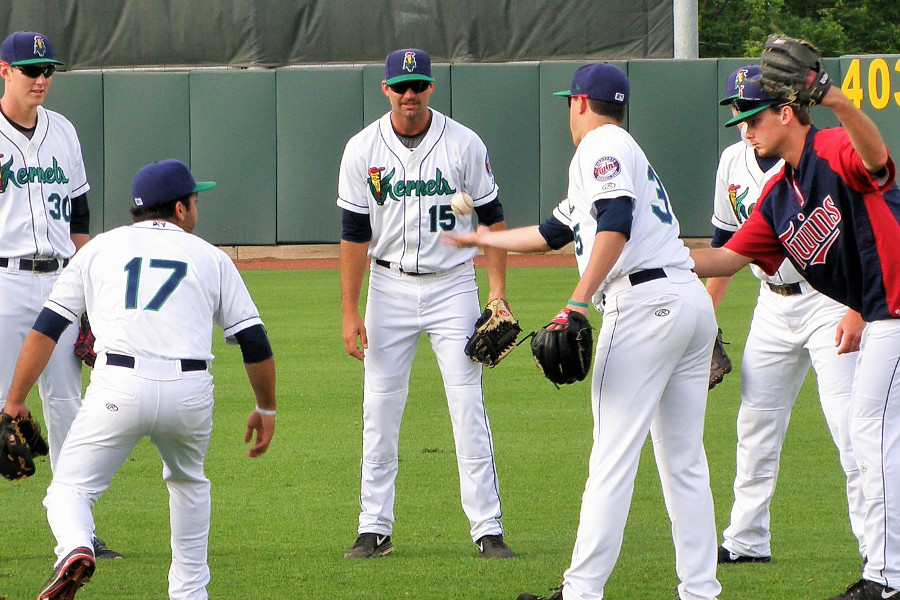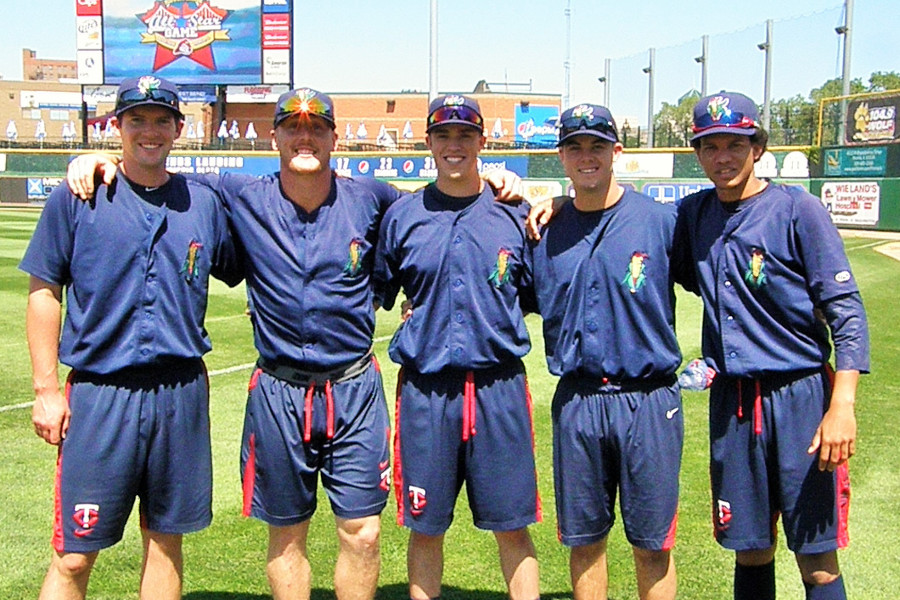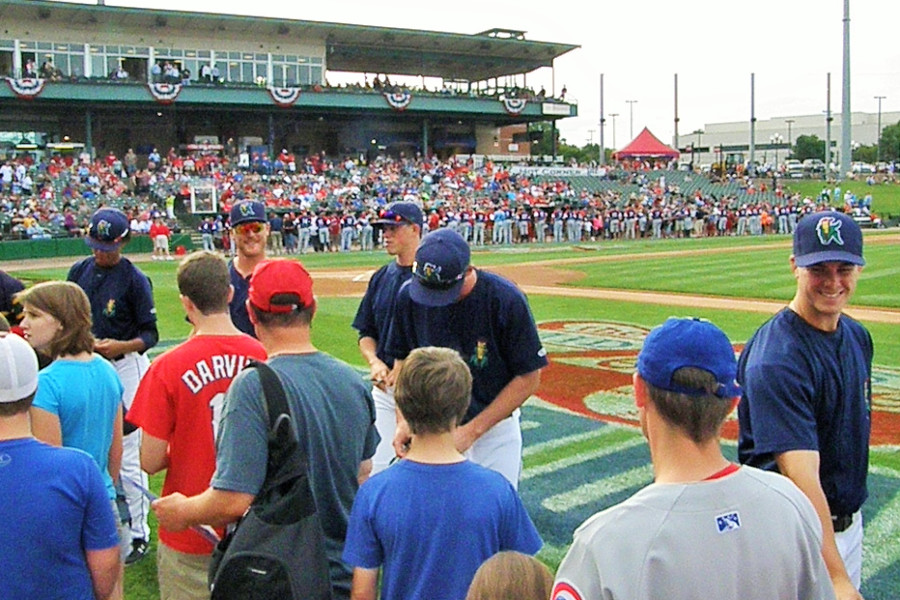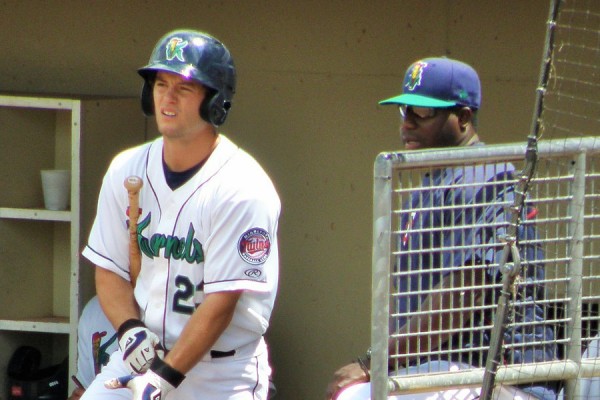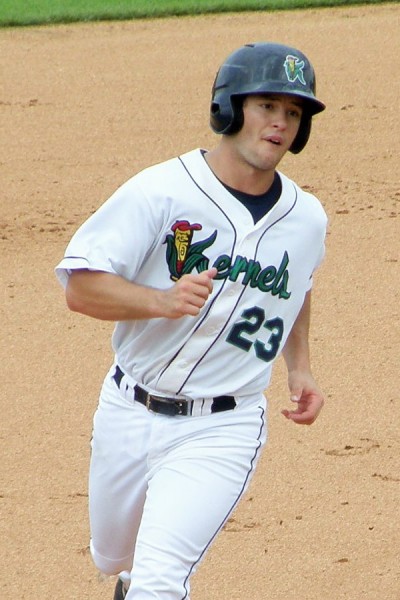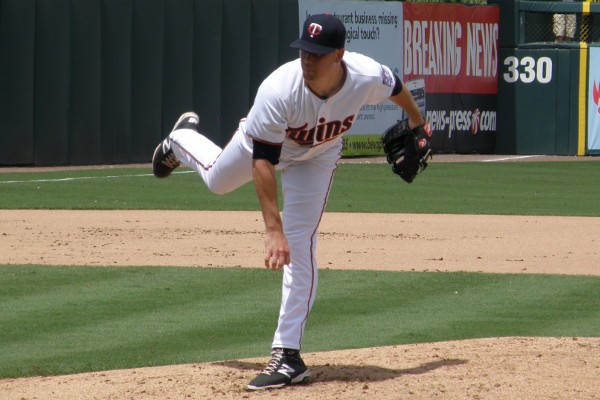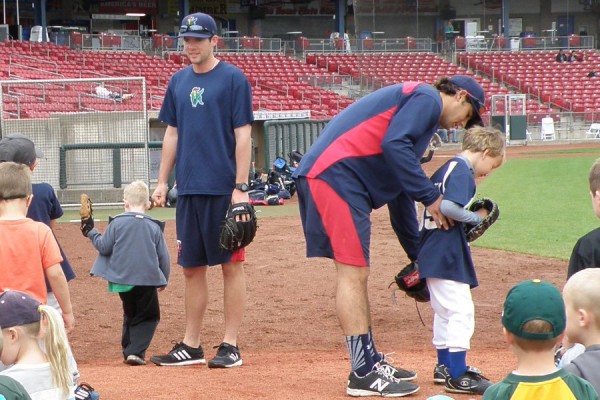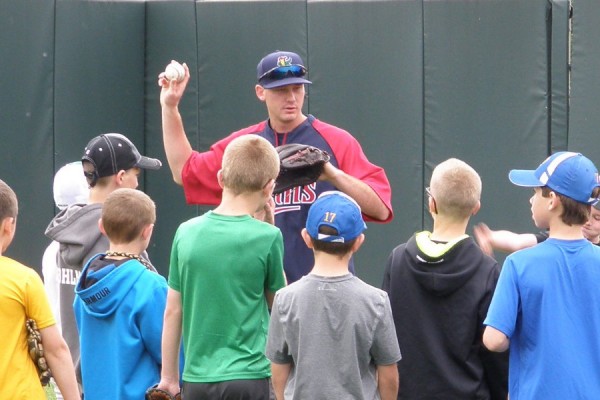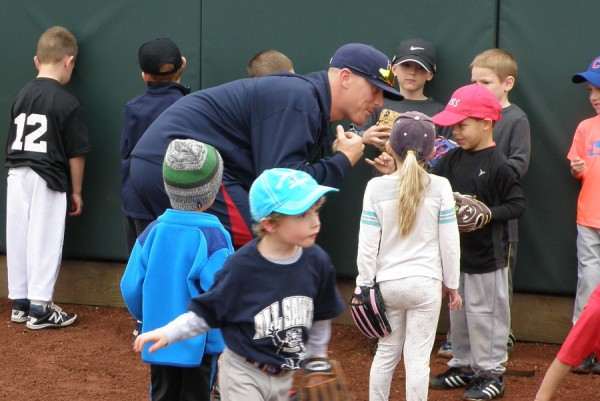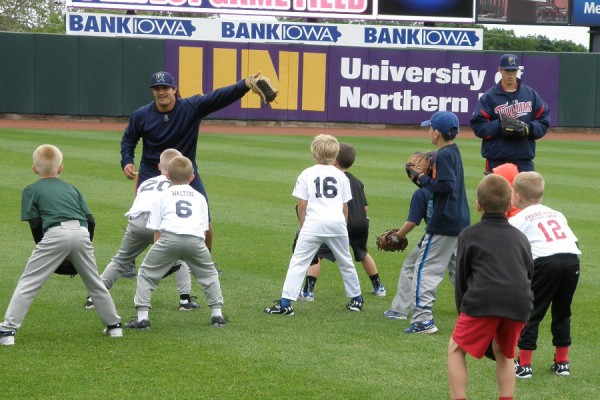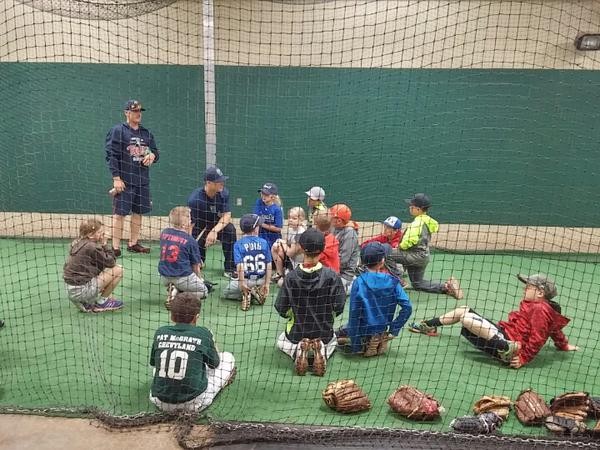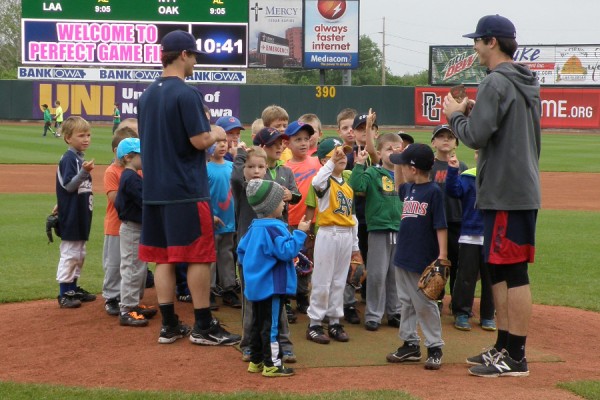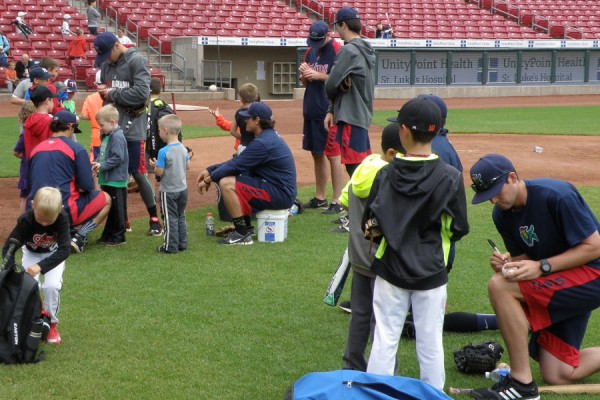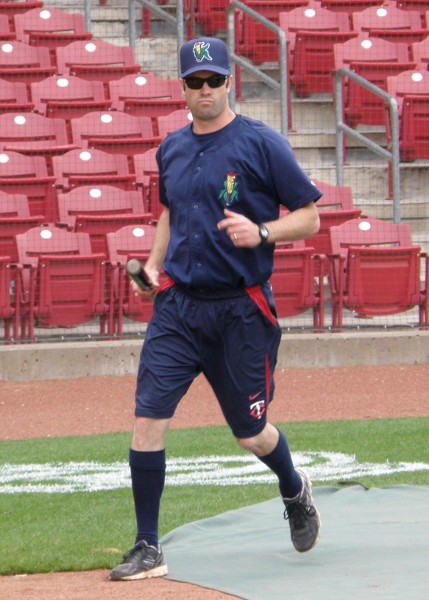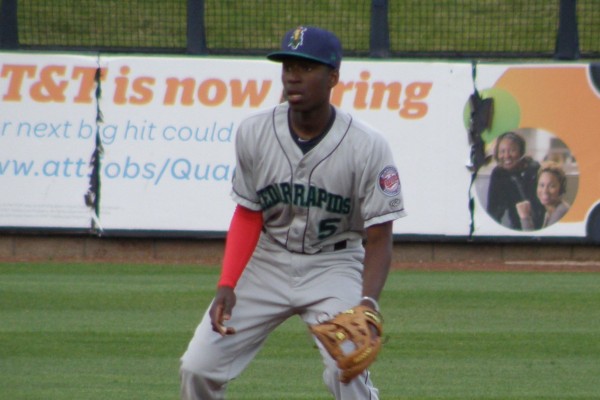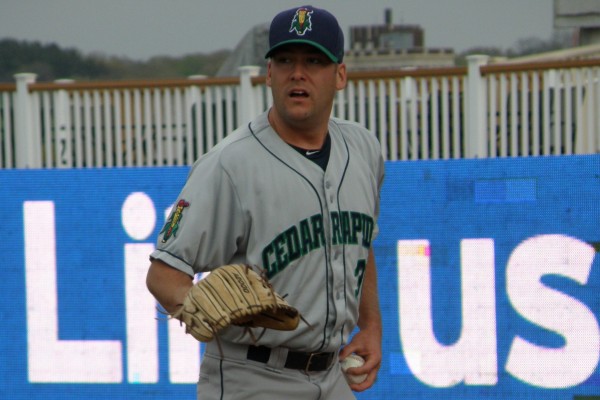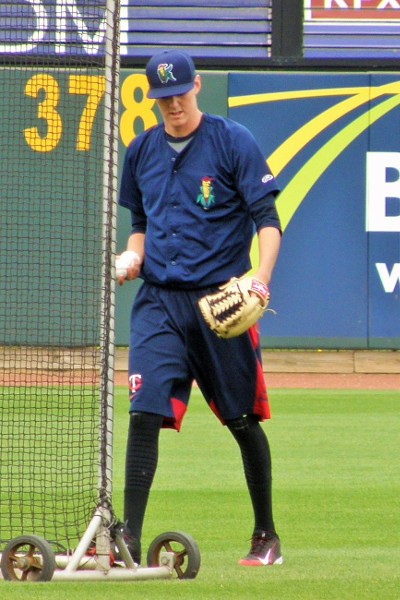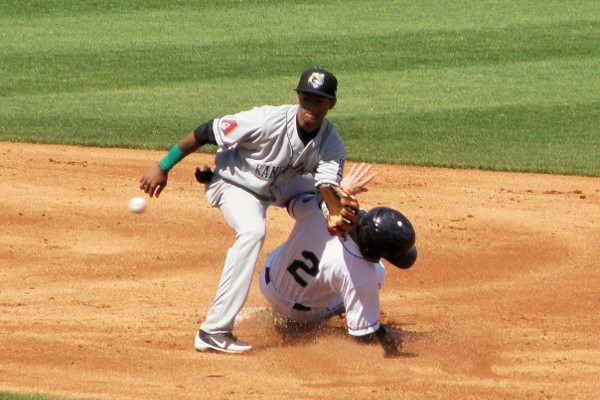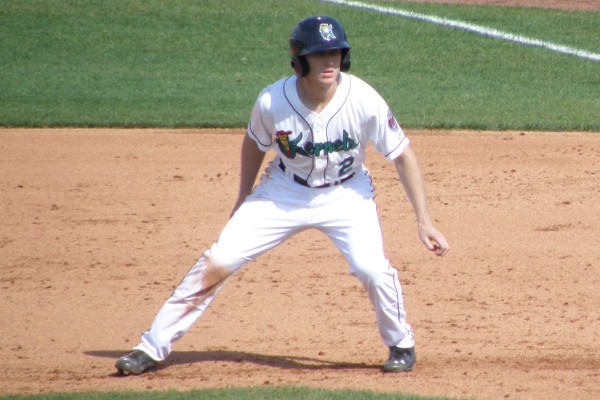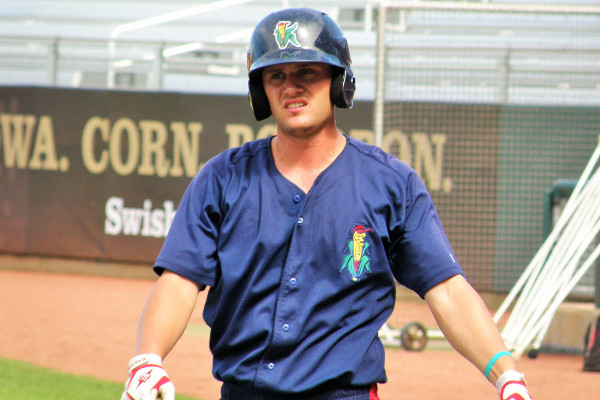
The first, last and most important job any minor league baseball player has is to work hard at improving his skills to move on up the organizational ladder to the next level. That said, when Cedar Rapids Kernels infielder Pat Kelly gets his next promotion, it may be bittersweet news for Pat and, more specifically, his family members that have been making frequent trips from Red Wing, Minnesota, to Cedar Rapids to watch Pat and the Kernels.
That could become a much more difficult trip to make as Kelly’s career carries him from Cedar Rapids to other stops on the Minnesota Twins affiliate list in Florida, Tennessee and New York.
According to Kelly’s father, Jim, who works in the Goodhue County (MN) Sheriff’s Office, the Kelly clan has made the trip to Cedar Rapids, “about every other weekend.”
“My schedule, I’m off every other weekend, Friday, Saturday, Sunday and this particular year, the Kernels have been home when I’ve been off pretty much,” the elder Kelly added. “When I first looked at it, I miscalculated and I thought, ‘I’ve got to work every weekend they’re home.’ But it turned out to be the opposite, so it worked out real good”
“There’s like 25 of them here,” Pat Kelly said Saturday. “My dad’s one of ten (siblings) so I have a lot of uncles. They’re all in Red Wing pretty much. I have an aunt up in Cottage Grove, Minnesota (about 35 miles from Red Wing), and that’s about the farthest they go.
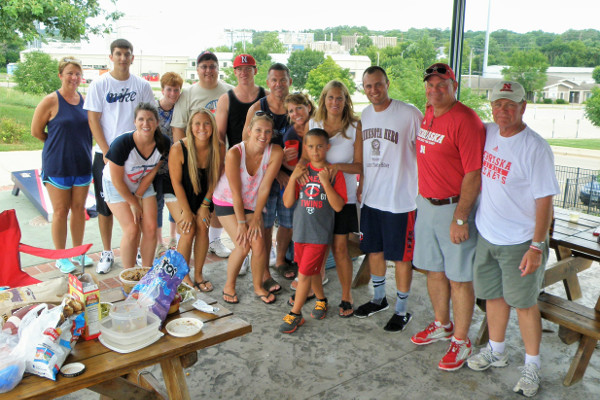
“They love coming down and coming to some games. They did that every Easter at Nebraska (where Pat played college baseball for the Cornhuskers). We’d get about 50-60 family members, they’d all make the trip down to Lincoln for Easter. It’s quite the crew.”
The “crew” during the most recent Kernels weekend homestand included not only family, but Cornhusker Head Athletic Trainer, Jerry Weber, whose career at Nebraska has spanned the Kelly generations. He was there when Jim was on campus as a Husker football player, as well as during Pat’s baseball career there.
Despite his dad’s connection to “Big Red,” it was no sure thing that Pat would follow in his father’s footsteps to Lincoln. And there was no chance he’d follow those footsteps to the football field at Nebraska, or anywhere else.
“I grew up loving baseball, basketball and football, all three, (but) baseball was always my favorite growing up. I played football, it was probably my third favorite.
He said he wasn’t just playing football growing up out of some kind of obligation to his dad, either.
“No, I liked it, I really did.”
By his junior year of high school, however, football was left behind.
“In tenth grade I was playing like eight quarters of football every Friday night. I was playing tenth grade games and then the varsity needed players so I would go play cornerback, running back, quarterback, like every Friday night. Then come my junior year, it was just like, it’s going to be too much.
“I was doing a lot of baseball in the fall. So I gave up football. I didn’t even start my junior year. I just started doing a lot more baseball in the fall. I played basketball, I love basketball. But baseball’s always been my favorite.”
That focus on baseball began early, according to his father.
“All baseball,” Jim confirmed. “He never really gave me a break. We work 12 hour shifts (at the Sheriff’s Office). I go to work at six in the morning and get home at six at night and he would be sitting on the steps with a bucket of balls, his bat and his glove and I would get in the driveway, ‘Let’s go dad.’ So we’d just go down the street to a park and he’d hit for as long as I could throw balls to him.”
Jim recalled it wasn’t until Pat was in fifth or sixth grade that his son discovered, while looking through an old scrapbook, that his dad had played football for Nebraska. “He saw that and he said, ‘We should go to Nebraska sometime.’ I said, ‘sure.'”
“Sometime” turned out to be when Pat was a freshman in high school.
“He had a Nebraska schedule up and he said, ‘I want to go to watch Nebraska and Texas A&M,” the father recalled. “In whatever year that was, they were ranked 4th and 5th in the country, respectively and I said, ‘alright, we’ll go.’”
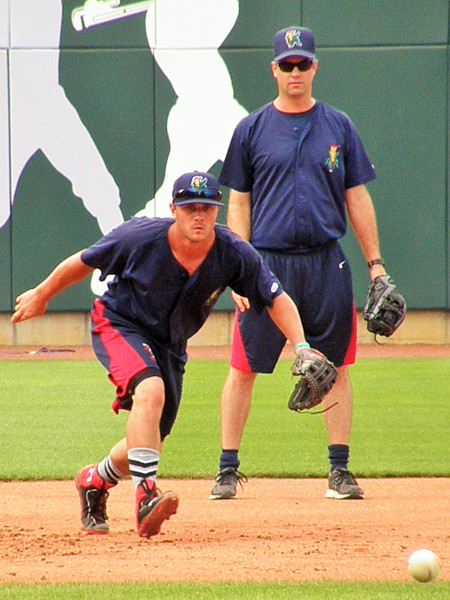
That baseball game made an impression on Pat.
“There was like nine or ten thousand people there. The game went like 16 innings long and not a fan left. Pretty cool. So from then on, I just felt like, ‘I really want to go to Nebraska.’ It ended up working out.”
It was the only basball game the Huskers and Aggies got in that weekend as rain washed out the scheduled Saturday and Sunday contests.
“We ended up leaving early on Sunday and I think we got as far as Omaha and he said, ‘I know where I want to go to college, dad. I’m going to go to Nebraska.’ I said, ‘oh, okay.’ You know it was so early yet, but you know, let the kid dream. Why not?”
Why not, indeed. Kelly ended up living his dream as a Cornhusker, earning 2nd team All-Big Ten honors his freshman year and was 1st team All-Big Ten in both his sophomore and junior seasons.
Not bad, considering he nearly never had the opportunity to attend his chosen school.
“It’s kind of funny though. Nebraska was one of my last recruiting letters,” Pat recollected. “I was just waiting for it, waiting for it. I’d always come home from school – I didn’t play football then, so my falls were open – so I’d come home early. I remember coming home and there were two letters, North Carolina and Nebraska, and I didn’t give a crap about the other one. I was pretty excited about that.”
“He called me at work and said, ‘dad, I got it!’ ‘You got what?’ ‘I got the letter.’ ‘OK, let me guess,’” Jim added.
“I had an amazing time at Nebraska,” Pat said. “Coach (Darin) Erstad is an unbelievable guy and a great coach and did a lot for me. Yeah, I love Nebraska. I can’t wait to go back there in the offseason and go to football games and hang out there.”
According to Pat, It wasn’t easy to leave a year early and begin his professional career. He knew it was time to move on, but it was a difficult decision to make.
“Yeah for me it was,” he recalled. “just because I loved Nebraska so much. It’s hard to leave those guys and the coaching staff.
“At the end of the day, every kid’s goal is to be a big leaguer. You just had to look at that and obviously I had no doubt if I go back to Nebraska, it would have been a great year and we probably would have had a great team, I mean they had a good team this year. But at the end of the day, you want to be a big leaguer and you want to get that going.”
For Pat, getting that going meant being signed by the Minnesota Twins as their 12th round selection in the 2014 draft and heading to Elizabethton, Tennessee, last summer to begin his professional career.
Nobody will confuse the environments for playing ball in Elizabethton with those in Lincoln, but Kelly didn’t mind the change.
“It was definitely a little bit of an eye-opener going down to E’town,” Pat said of his first impressions of the community where the Twins’ short-season Appalachian League affiliate is located. “I didn’t really have any expectations, to be honest. I just kind of went in with an open mind. It was fun, we made the playoffs and had a good season. Getting paid to play baseball, that’s a pretty good deal.”
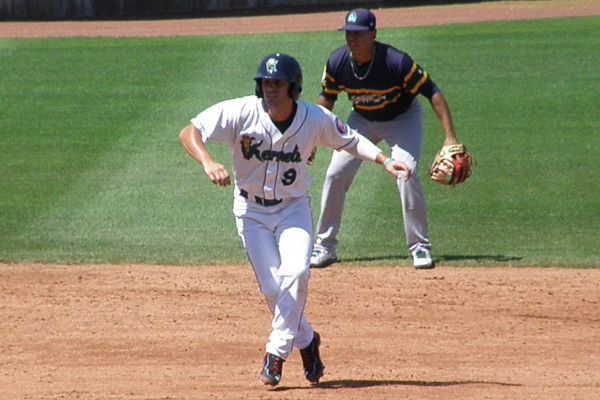
This season, Kelly has been on the Kernels roster since Opening Day, making this his first year of enduring a full 140-game minor league schedule. Some players feel like they hit a wall, physically and/or mentally, at about this point in their first full season.
“Yeah it’s kind of funny. Around the all-star break, you get half way and you’re like, ‘alright, we’re doing that again. Same thing over,’” Kelly said. “But no, I haven’t really seemed to hit that wall yet. I’m still enjoying every day with the guys and just can’t really complain. Getting paid to play baseball.
“I think just the base adjustment from college to now is, here it’s every day, you play every day. In college, you didn’t play every day. You had class, you had other stuff. But now, every single day, this is your job. I think that’s just the biggest adjustment.
“Even if you’re not in the lineup, you have a full day. You’re at the park from 1:30 to 10 or 11 at night. You’re still doing your work. You’re in the cage, you’re doing stuff. You’re still drained at the end of the day and then the next day, you do it again. I think that’s just the biggest adjustment for me, just getting mentally ready every day to go to work and get better.”
With that mentality, it’s no wonder Kelly uses Florida Georgia Line’s “Every Night” as his walk-up song.
After Kelly hit .242 in 39 games, all at second base, for Elizabethton a season ago, he’s been running closer to .220 over the season for the Kernels. He played second base through most of the season, but has been spending more time at third base since TJ White’s promotion to Fort Myers.
Kelly’s also been faring better at the plate more recently, hitting .258 in his last ten games and carrying a four-game hitting streak into Thursday night’s contest with Clinton.
That stretch includes Kelly getting three hits, including a pair of doubles, in eight at-bats with his personal cheering section in the Cedar Rapids crowd last weekend.
This offseason, Kelly will return to Lincoln where he’ll live and work out with Cedar Rapids native (and 2014 Kernel) Chad Christensen, who is also a former Husker ballplayer.
“We lived together last offseason and we’re going to live together this offseason,” Kelly explained. “We do everything together and work out there.”
Lincoln is also much closer than Red Wing to his girlfriend’s home in Kansas City, but that’s probably just a coincidence.
No matter how far away from his home and family in Red Wing Kelly’s professional baseball career may take him, however, he’ll always carry something of his home with him.
Yes, the love of his family, certainly, but also the oil he uses to break in his gloves.
“I oil them with oil from Red Wing Shoes in Red Wing. I always use their boot oil for my gloves and it seems to work really well.”
– JC

